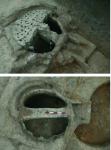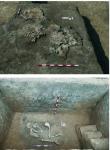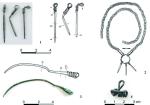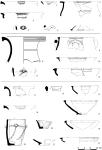Summary (English)
EXPLORATIONS NEAR THE VILLAGE OF GORNI DABNIK (Milena Tonkova – milenatonkova@hotmail.com) The excavations of the Thracian settlement of the Late Hellenistic period continued. In Sector North, the exploration of the pottery kiln was completed. Sherds from two krateroi, small vessels and a lid were found, most of them waste products, probably produced in the kiln. The kiln dated to the 2nd – 1st century BC. Two pits were discovered, containing pieces of charcoal, sherds and animal bones. Three silver pendants were found close to the pottery kiln, originating from chain-necklaces typical of the Dacian jewelry of the end of the 2nd – first half of the 1st centuries BC. A fragment of a bronze bracelet of the 2nd – 1st century BC was also found. In Sector South, the excavation of the burned house constructed of wattle-and-daub was completed; its floor, plastered with clay, and an eschara were documented. Pit C7 was discovered, containing fragmentary wattle-and-daub and Thracian sherds. The exploration of Pit C1 was completed, containing fragmentary wattle-and-daub, Thracian sherds and a handle of an amphora from Rhodes. Pit C6 was explored. It was 1.50 m deep; a skeleton of a rabbit and a skeleton of a woman, 20 – 30 years old, were discovered on its bottom. The woman was laid in a Hocker position on her right side. There were pieces of charcoal and carbonized millet and barley around and beneath her skull. A pendant made from part of a Late La Tène iron fibula was discovered close to the skull. The ritual pit dated to the 2nd – 1st century BC and accommodated a human sacrifice or an unusual burial. Pit C8 was 2 m in diameter and 2.20 m deep. It contained a pile of fragmentary ceramic vessels: dolia, krateroi, jugs, bowls, lids, pots and cups of the 2nd – 1st century BC. Sherds of amphorae from Rhodes were discovered on the site and one sherd from the mouth of an amphora dated to 230 – 200 BC. The Thracian settlement existed during 200 – 50 BC. A settlement of the 19th century was documented on the site as well. A cellar was discovered, containing iron tensioners for a loom and sherds from a jug.
- Milena Tonkova - Archaeological Institute with Museum
Director
- Milena Tonkova - Archaeological Institute with Museum
Team
Research Body
- Archaeological Institute with Museum





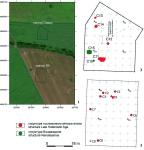
![Download [PDF]](/excavation/skins/fasti/images/results/download_sml.png)
